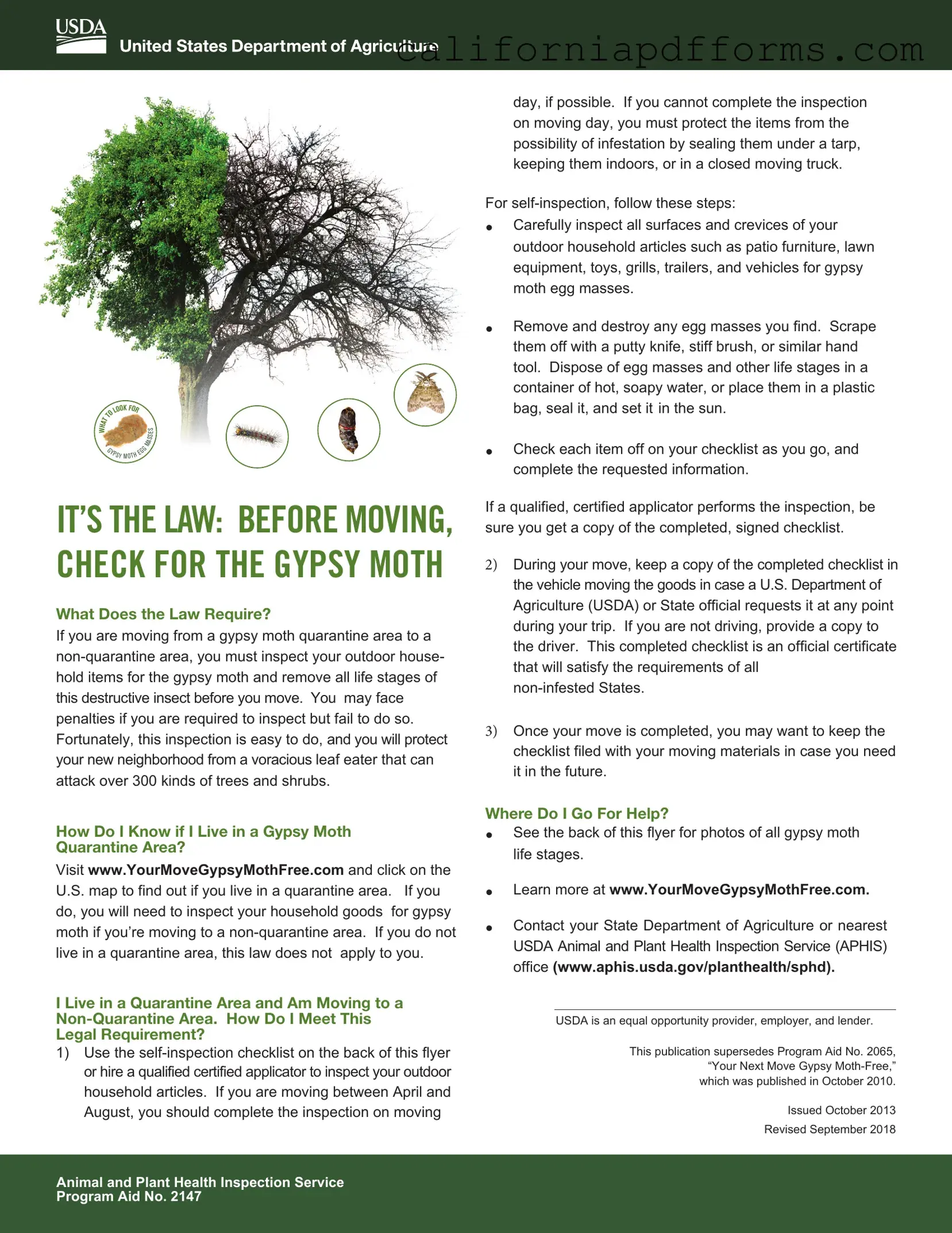The form requires individuals moving from a gypsy moth quarantine area to a non-quarantine area to inspect their outdoor household items for gypsy moths. This includes checking for all life stages of the insect. Failure to comply may result in penalties.
How can I find out if I live in a gypsy moth quarantine area?
You can determine your status by visiting
www.YourMoveGypsyMothFree.com
. Click on the U.S. map to see if your area is under quarantine. If you are not in a quarantine area, the inspection requirement does not apply to you.
What steps should I follow if I live in a quarantine area and am moving?
To meet the legal requirement, follow these steps:
-
Use the self-inspection checklist provided or hire a certified applicator to conduct the inspection.
-
Inspect your items, especially if moving between April and August. Ideally, complete the inspection on moving day.
-
Seal items if inspection cannot be completed on moving day.
For self-inspection, check all surfaces and crevices of outdoor items for egg masses and remove any found.
What should I do with any gypsy moth egg masses I find?
Remove and destroy any egg masses you discover. You can scrape them off using a putty knife or stiff brush. Dispose of them in hot, soapy water or seal them in a plastic bag and place them in the sun.
Is there a specific way to keep track of my inspection?
Yes, you should check off each item on your checklist as you inspect them. If a certified applicator conducts the inspection, ensure you receive a signed copy of the checklist.
What should I do with the completed checklist during my move?
Keep a copy of the completed checklist in the vehicle transporting your items. This document serves as an official certificate that may be requested by USDA or state officials during your trip.
What should I do with the checklist after my move?
Once your move is complete, it’s advisable to keep the checklist filed with your moving documents. This can be useful for future reference or if any questions arise.
You can refer to the back of the checklist for photos of gypsy moth life stages. For more detailed information, visit
www.YourMoveGypsyMothFree.com
or contact your State Department of Agriculture or the nearest USDA APHIS office.
What happens if I do not comply with the checklist requirements?
Failure to comply with the inspection requirements can lead to penalties. It is important to follow the checklist procedures to avoid any legal issues and to protect your new community from the gypsy moth.
